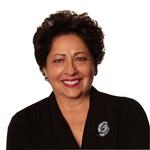
nopporn/Shutterstock.com
New Ways to Think About Hiring, Managing and Leading
Preparing for tomorrow's federal workforce.
One of our greatest challenges at the Office of Personnel Management is to help agencies grow and develop our federal leaders of the future. That is why I convened a series of Thought Leader talks this fall, and I’m pleased to report that the three sessions provided us with new information, inspiration and vision to guide OPM in meeting that challenge.
The sessions brought together leaders from government, business, academia and global organizations to talk about the future of leadership and how we can address challenges and opportunities. We focused on millennials because we know that they are the future of the American workforce, as well as innovative new practices around leadership development, assessment and engagement. And while we have to think about the leaders of today and those who will come after them, we must also plan for tomorrow.
We also talked about how work may take many new forms in the coming years. In our first session, we discussed how email could be replaced by new forms of communication. We talked about working more virtually. If the current move toward telework continues, virtual work will increase, with some employees never stepping foot in a traditional office.
We are already starting to use new technologies to be more strategic in our recruiting. Many organizations, including the U.S. Army, are turning to a new type of assessment for applicants. Instead of just analyzing resumes, managers are using a situation-based simulation that allows them to assess an applicant’s choices and skills. It’s one of the most innovative and useful tools I’ve seen in the recruiting realm.
Most importantly, we examined leadership. We discussed how we need to look at leadership differently. Leaders must be outcome-driven to be successful. That includes judging those who work for us on what they do well rather than on what they do poorly. Marcus Buckingham, a noted business consultant and thinker, led an impressive discussion on his strategy of emphasizing employee strengths for assessment of performance management and engagement. Marcus talked about the value of focusing on coaching to help employees succeed in their jobs and grow in their careers. It’s a different way of thinking, and it is one of the discussions that made the biggest impact on me.
Each one of these sessions inspired my thinking about how I will help managers across government grow and develop our talented and hard-working federal workforce. We already have begun work on several initiatives to strengthen our leadership pipeline, including a Senior Executive Service mentoring program, a coaching network and a special onboarding Web page for new members of the SES.
I look forward to convening more sessions in the future. The dialogue we fostered was meaningful for every member of the group. And we helped each other bring our own worlds closer together. We are all determined to recruit, develop and retain the leaders of tomorrow.
One of the chief human capital officers attending the sessions summed it up best. As we were leaving Tuesday’s final talk, she told me that the Thought Leader talks were the most important set of professional discussions she had ever been a part of.
I totally agree.
(Image via nopporn/Shutterstock.com)







